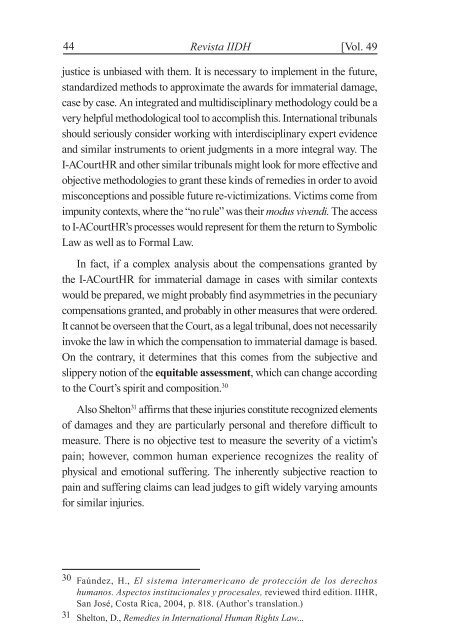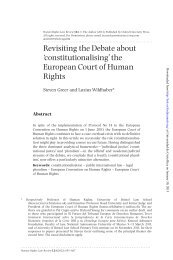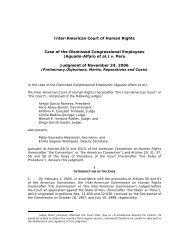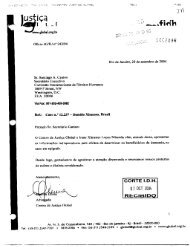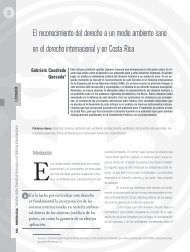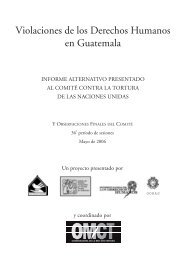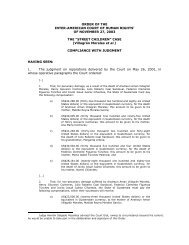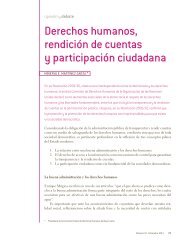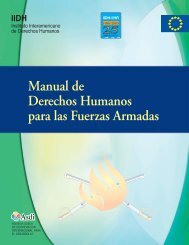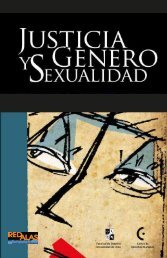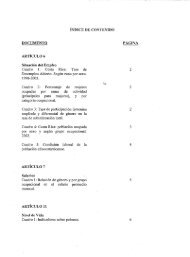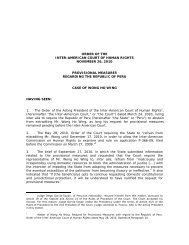Inter-American Court of Human Rights' reparation judgments ...
Inter-American Court of Human Rights' reparation judgments ...
Inter-American Court of Human Rights' reparation judgments ...
- No tags were found...
You also want an ePaper? Increase the reach of your titles
YUMPU automatically turns print PDFs into web optimized ePapers that Google loves.
44 Revista IIDH[Vol. 49justice is unbiased with them. It is necessary to implement in the future,standardized methods to approximate the awards for immaterial damage,case by case. An integrated and multidisciplinary methodology could be avery helpful methodological tool to accomplish this. <strong>Inter</strong>national tribunalsshould seriously consider working with interdisciplinary expert evidenceand similar instruments to orient <strong>judgments</strong> in a more integral way. TheI-A<strong>Court</strong>HR and other similar tribunals might look for more effective andobjective methodologies to grant these kinds <strong>of</strong> remedies in order to avoidmisconceptions and possible future re-victimizations. Victims come fromimpunity contexts, where the “no rule” was their modus vivendi. The accessto I-A<strong>Court</strong>HR’s processes would represent for them the return to SymbolicLaw as well as to Formal Law.In fact, if a complex analysis about the compensations granted bythe I-A<strong>Court</strong>HR for immaterial damage in cases with similar contextswould be prepared, we might probably find asymmetries in the pecuniarycompensations granted, and probably in other measures that were ordered.It cannot be overseen that the <strong>Court</strong>, as a legal tribunal, does not necessarilyinvoke the law in which the compensation to immaterial damage is based.On the contrary, it determines that this comes from the subjective andslippery notion <strong>of</strong> the equitable assessment, which can change accordingto the <strong>Court</strong>’s spirit and composition. 30Also Shelton 31 affirms that these injuries constitute recognized elements<strong>of</strong> damages and they are particularly personal and therefore difficult tomeasure. There is no objective test to measure the severity <strong>of</strong> a victim’spain; however, common human experience recognizes the reality <strong>of</strong>physical and emotional suffering. The inherently subjective reaction topain and suffering claims can lead judges to gift widely varying amountsfor similar injuries.30 Faúndez, H., El sistema interamericano de protección de los derechoshumanos. Aspectos institucionales y procesales, reviewed third edition. IIHR,San José, Costa Rica, 2004, p. 818. (Author’s translation.)31 Shelton, D., Remedies in <strong>Inter</strong>national <strong>Human</strong> Rights Law...


